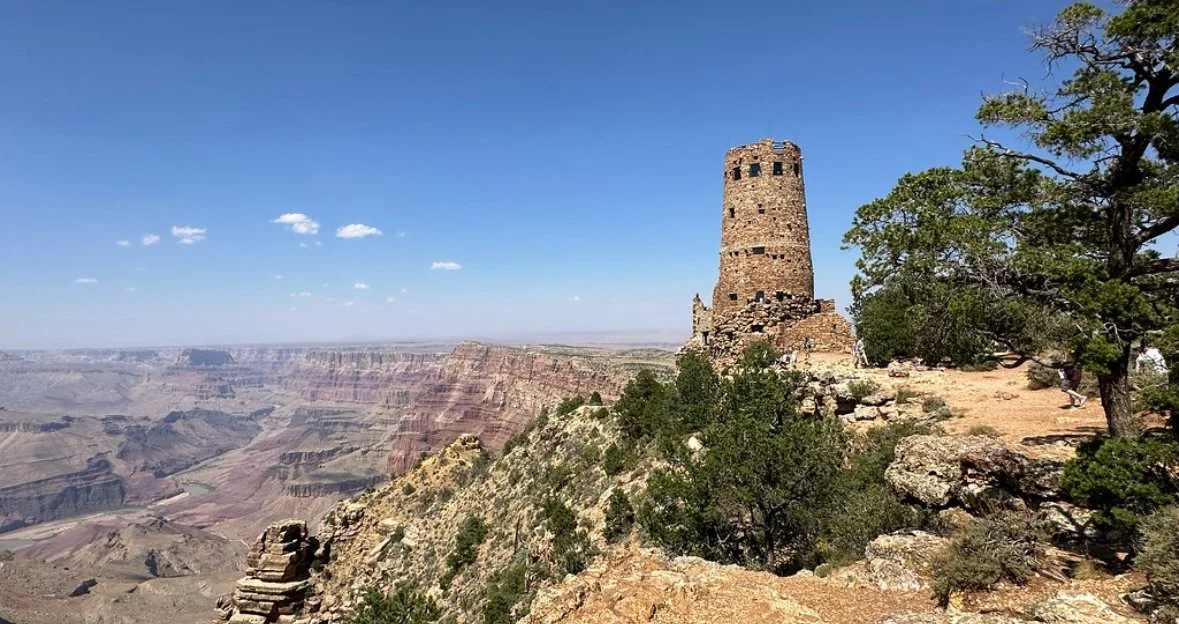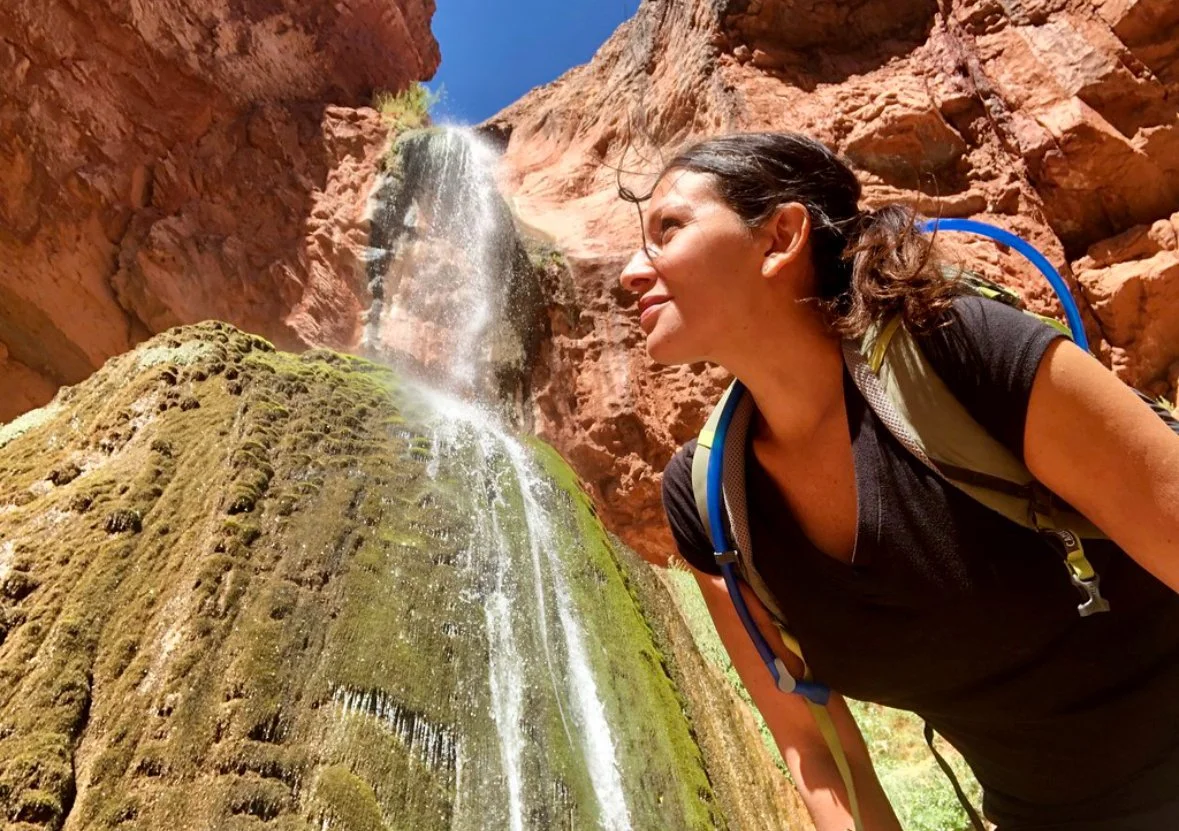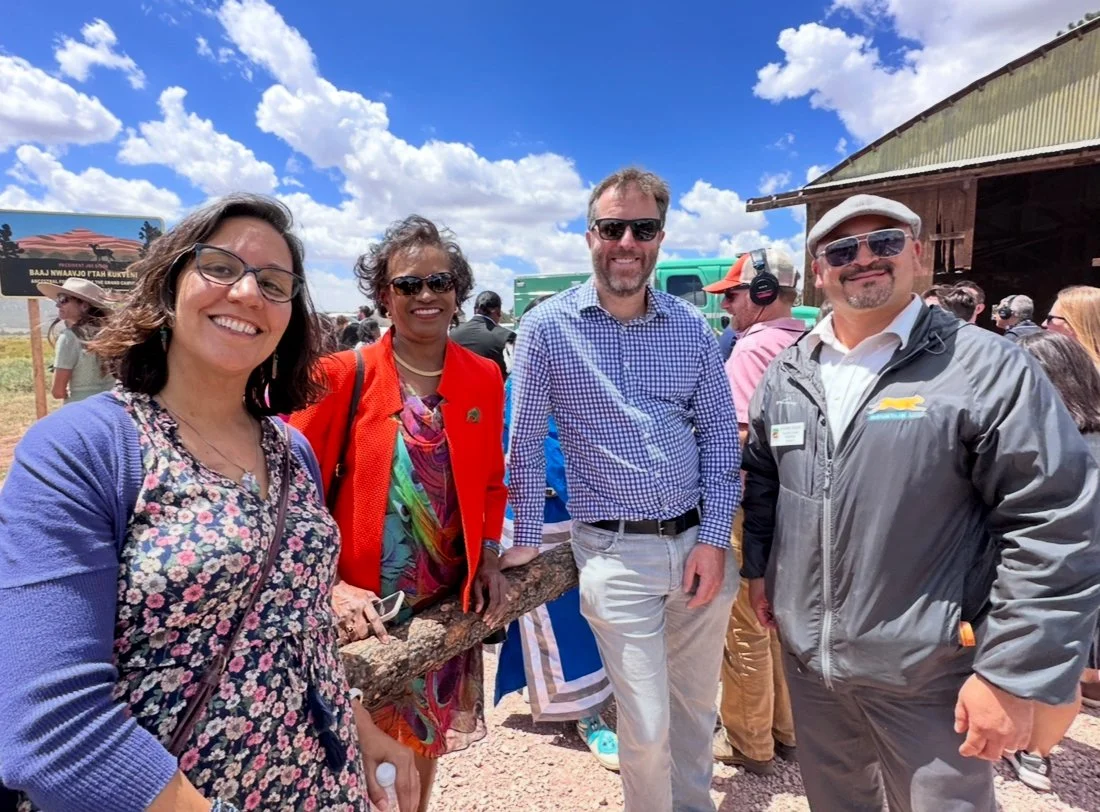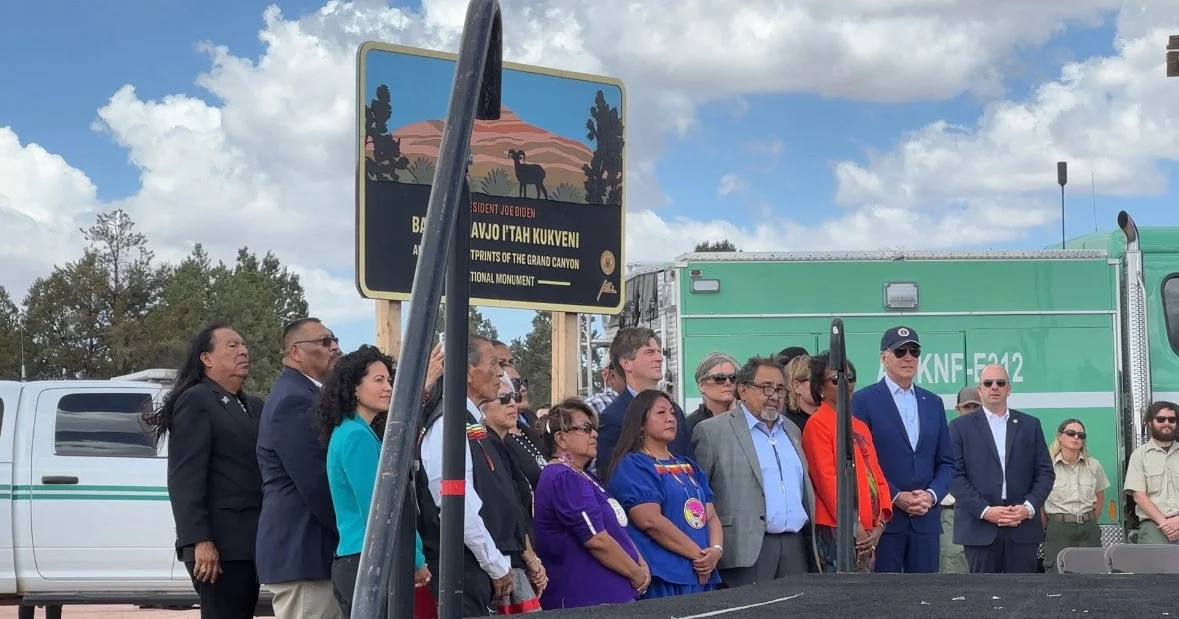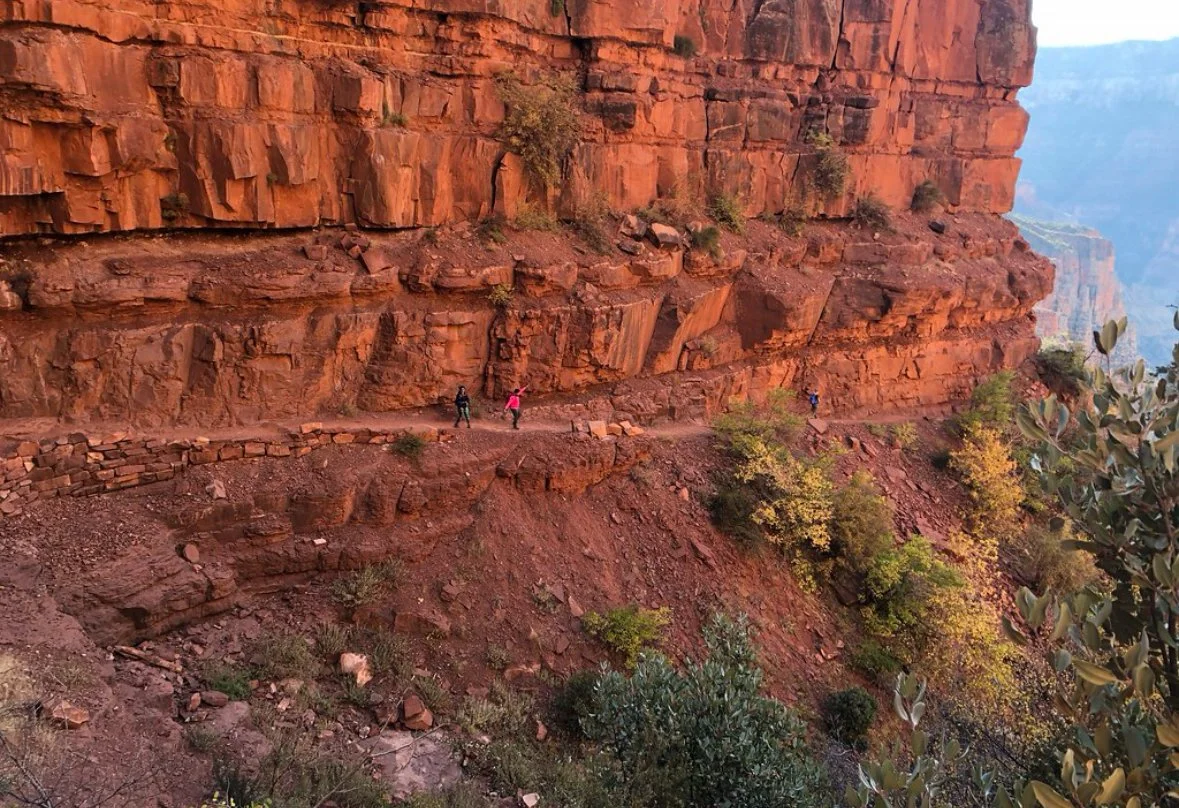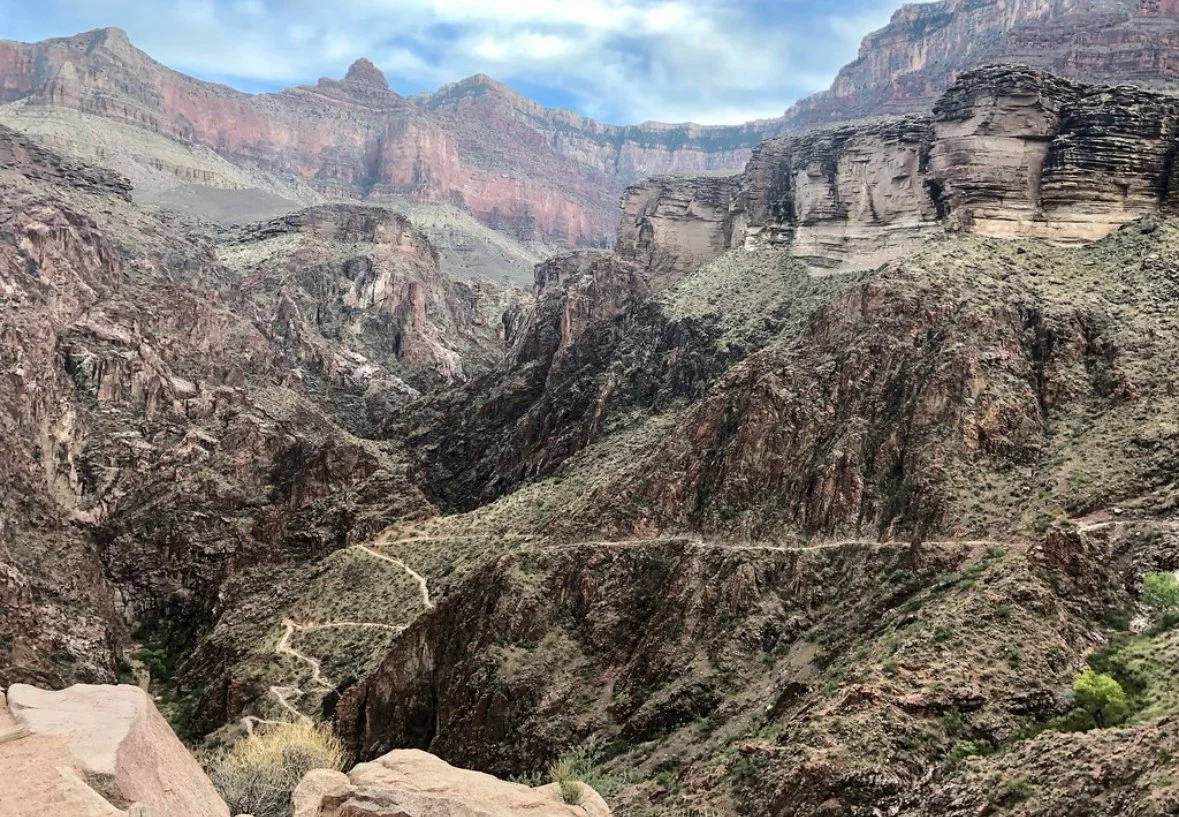Baaj Nwaavjo I’tah Kukveni—Ancestral Footprints of the Grand Canyon National Monument Turns Two and Still Needs Our Advocacy and Protection
By Daniela Zavala, HECHO Communications Director.
Like many who arrive in Arizona, as soon as I moved to Phoenix, I was excited to visit the Grand Canyon, the second most visited national park in the United States and one of the Seven Natural Wonders of the World.
I remember standing at a South Rim viewpoint during that first visit, completely speechless. The vastness, the silence, the colors. It was more than breathtaking. It was an experience that touched me deeply.
That awe-inspiring moment left me wanting more. Over the years, I returned again and again, hiking deeper into the canyon each time.
I first explored the turquoise waterfalls of Havasupai, a stunning destination accessible only by foot, horseback, or helicopter, nestled deep in the southwest corner of the Grand Canyon. This incredible and remote location is home to the Havasupai people, who have lived in the Grand Canyon for over 1,000 years.
After that, I hiked from the South Rim to the Colorado River on day trips. But the canyon continued to inspire me to keep exploring.
Eventually, I undertook the rim-to-rim trek, a challenging 24-mile journey from the North Rim to the South Rim. Although it left me physically exhausted, I found myself more in love with the canyon than ever. Being immersed in this truly unique landscape, surrounded by the imposing rock layers of the canyon walls, which reveal a history spanning million years, is an experience that’s hard to describe. The combination of rock formations, wildlife, waterfalls, the vegetation, and the Colorado River made it unforgettable.
Despite all the time I spent there, it wasn’t until I started working at HECHO that I learned the Grand Canyon was under threat.
I was shocked to learn about the dangers of uranium mining in such a fragile and sacred place. It is threat to a vital watershed, cultural resources, ecosystems, and the livelihood of the Havasupai people. If their only water source is contaminated, it would endanger their very survival.
Past uranium mining operations have caused damage to native lands, impacting Indigenous people in northern Arizona. The idea that this could happen within the boundaries of a national treasure is unthinkable. And yet, it is very real.
That’s why August 8, 2023, was an historic and emotional day. On a sunny Tuesday morning, I had the honor of representing HECHO at the official designation of Baaj Nwaavjo I’tah Kukveni – Ancestral Footprints of the Grand Canyon National Monument. This long-awaited victory protected nearly one million acres of public lands surrounding the Grand Canyon, a landscape of unparalleled cultural, historical, ecological, recreational, and economic value.
I remember standing at a viewpoint that evening after the event, watching the sunset with tears in my eyes as I reflected on what this place meant to me and so many others. It took decades of advocacy from Tribes, conservation organizations, outdoor and sporting groups, businesses, local leaders, and community members who came together to secure this permanent protection.
Unfortunately, just five months after the designation, Energy Fuels Resources began extracting uranium ore from Pinyon Plain Mine, located less than six miles from the Grand Canyon’s South Rim entrance and within the boundaries of the monument. Although this monument designation bans all new claims, Pinyon Plain Mine is exempted because it has a valid existing right under the 1872 Mining Law.
Besides the current mining operations at the Grand Canyon, the monument itself is facing other threats, including efforts to revoke the designation or reduce its boundaries, despite overwhelming public support from Arizonans across party lines. According to recent surveys, Arizonans cherish the Grand Canyon and want to see it protected for generations to come.
Beyond its irreplaceable cultural and natural resources, the Grand Canyon is the economic backbone of surrounding communities. In 2022 alone, nearly five million visitors spent over $750 million in local economies, supporting nearly 10,000 jobs and generating $1 billion in economic output. A healthy, protected Grand Canyon region is vital not only for its past, but for its future. Uranium mining threatens the flourishing outdoor recreation and tourism economy.
As a hiker, I’ve spent over a decade exploring this landscape. As a mother, I want my son and future generations to be able to experience it with the same sense of wonder and freedom I have. Let's celebrate Baaj Nwaavjo I'tah Kukveni's second anniversary, but also, let's stay vigilant.
